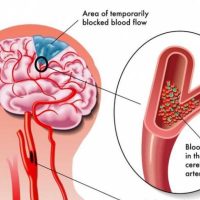
Back pain is one of the most common reasons someone seeks medical attention, in fact about 80 percent of adults experience lower back pain at some point in their lifetimes. Men and women are equally affected by lower back pain, which can range in intensity from a dull to constant ache to a sudden, sharp sensation that leaves the person incapacitated.
Pain can begin abruptly as a result of an accident or by lifting something heavy or, it can develop over time due to age-related changes of the spine. When the pain persists for more than 12 weeks, it is termed chronic back pain. About 20 percent of people affected by acute lower back pain develop chronic lower back pain. In some cases, treatment successfully relieves chronic back pain, but in other cases pain persists despite medical and surgical treatment.
In the past, some patients were taught to learn to live with the pain. However advances in pain management treatments can provide complete or partial pain relief, called procedural or interventional treatments because they usually use needles and electronic devices to treat back pain.
The primary goal in the management of lower chronic back pain is often temporary alleviation of pain to enable the patient to become fully engaged in physical therapy and rehabilitation programs. The aim is to improve strength and body mobility that minimizes physical stress to provide long-term relief.
Patients who may benefit from minimally invasive injection treatments are those who are inappropriate surgical candidates due to age or have the simultaneous presence of two chronic diseases or conditions or, cannot tolerate oral pain medications in dosages necessary to control their symptoms.
Here are some interventional treatments available at BIMC Nusa Dua:
A jab can be more effective than oral medication because it delivers medication directly to the anatomic location that is generating the pain. Typically, a steroid medication is injected to deliver a powerful anti-inflammatory solution directly to the area that is the source of pain. Depending on the type of injection, some forms of lower back pain relief may be long lasting and some may be only temporary.
Diagnostically, injections can be used to help determine which structure in the back is generating pain. If lidocaine or similar numbing medication is used, and the patient feels temporary relief after an anatomic region is injected (e.g. facet joint or sacroiliac joint), it can then be inferred that the specific region is the source of the pain. When considered in conjunction with a patient’s history, physical exam, and imaging studies, injections used for diagnostic purposes can be very helpful in guiding further treatment for the patient.
“Typically, about 30% to 50% of patients undergoing the neurotomy will experience significant pain relief for up to two years” – Dr. Ketut Ngurah Gunapriya, BIMC Nusa Dua-
Neurotomy Injection
This procedure uses a needle with a probe inserted just outside the joint. The probe is then heated with radio waves and applied to the sensory nerve of the joint in order to disable the nerve. Theoretically, by deadening the sensory nerve the joint will effectively prevent pain signals from reaching the brain’s pain center.
The success rate of each procedure varies. An epidural steroid injection is generally successful in relieving lower back pain for approximately 50% of patients. While the effects of the injection tend to be temporary (one week to one year), an epidural can be very beneficial in providing relief for patients during an episode of severe back pain and allows patients to progress in their rehabilitation. Typically, about 30% to 50% of patients undergoing the neurotomy will experience significant pain relief for up to two years. Of the remaining lower back pain patients, about 50% will receive some pain relief for a shorter period.
With any interventional treatment, it is important to talk with us about the risks and benefits associated with each treatment, as well as long-term effects. These treatments are not the first line of attack, but are available as more aggressive approaches to treat what can often be life-limiting back pain.











